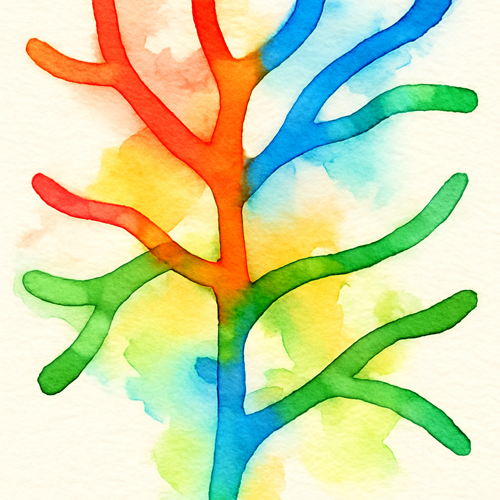Self-identifying as having Attention-Deficit/Hyperactivity Disorder (ADHD) means recognising in yourself a pattern of symptoms that seems to fit ADHD and using that label personally—often before (or instead of) a formal clinical diagnosis.
In the UK, formal diagnosis follows evidence-based criteria (DSM-5-TR) and should be completed by appropriately qualified specialists, with impairment assessed across settings and differential diagnoses considered (e.g., anxiety, depression, sleep disorders, autistic spectrum, trauma). See NICE guideline NG87 for UK standards on recognition, assessment and management.
Potential advantages
1) Validation and self-understanding
Many people experience significant relief when a coherent explanation makes sense of years of difficulties with attention, organisation and impulsivity. Reframing struggles through a neurodiversity lens can reduce shame and self-criticism.
2) Motivation to seek help
Self-identification can be a constructive first step that prompts record-keeping (lifespan history, school reports), booking an assessment, and trying low-risk organisational strategies while waiting.
3) Community and practical strategies
Engaging with ADHD communities can offer peer validation and share workable tips (external reminders, task chunking, environmental design). For some, this is the first time strategies feel “designed for my brain”.
4) Early self-management
While you wait for assessment, adopting routine supports (sleep hygiene, structured planning, cueing, body-doubling) may mitigate impact—especially with long NHS waits.
Important disadvantages and risks
1) Misattribution and missed conditions
ADHD-like difficulties (distractibility, procrastination, restlessness) are not unique to ADHD. Anxiety, depression, sleep apnoea, autistic spectrum conditions, trauma responses and medication effects can present similarly. Assuming “it’s ADHD” may delay appropriate care.
2) Delayed access to formal pathways and adjustments
In the UK, workplace/education adjustments and medication require clinical diagnosis and shared-care arrangements aligned with NICE guidance. Remaining indefinitely in a self-identified status can limit access to effective treatments and reasonable adjustments.
3) Over-identification and stigma
Strong identification with an online ADHD persona can become restrictive (“I can’t do X because ADHD”), or invite scepticism from others if no assessment has been pursued.
4) Self-treatment hazards
Unsupervised stimulant use, excessive caffeine or supplement stacks, or rigid adherence to online “hacks” may be ineffective or risky, and ignore co-morbidities that need different care.
UK context at a glance
- Standards of care: NICE NG87 — recognition, assessment and management standards for children and adults with ADHD in the UK.
- Diagnostic framework: DSM-5-TR – American Psychiatric Association — diagnostic criteria for symptom clusters, age of onset and cross-situational impairment.
- Service pressure: NHS waiting lists for ADHD assessment have grown substantially in recent years, leading some to seek private assessments; quality and post-diagnosis arrangements vary, so due diligence is essential.
- Treatment outcomes: Evidence suggests that appropriate treatment (psychological, pharmacological, or multimodal) is associated with improved long-term outcomes compared with untreated ADHD, though not always to population-norm levels.
Practical guidance if you’re currently self-identifying
- Treat self-ID as a starting point. Aim for a thorough assessment by an ADHD-knowledgeable clinician (psychiatrist, clinical psychologist, or specialist team).
- Keep a brief history file. Lifespan examples across contexts (school, work, home), report cards if available, and any relevant screens.
- Screen differentials. Note sleep quality, mood, anxiety, trauma history, sensory sensitivities, autistic traits and any medical causes that could mimic ADHD.
- Adopt low-risk supports now. Externalise tasks (calendars, timers), break work into small, timed sprints, build routines, reduce friction in your environment.
- Be cautious with substances and “hacks”. Medication must be prescribed and monitored; avoid self-medicating.
- Clarify language with others. Where relevant, you can say “I suspect I have ADHD and I’m seeking assessment” rather than presenting a diagnosis you do not yet have.
Summary
Self-identifying as ADHD can be helpful—it validates experience, connects you with community and motivates action. It also carries risks—misattribution, self-treatment, stigma and, crucially, delayed access to evidence-based care.
In the UK, following NICE-aligned assessment and treatment pathways is the safest way to turn recognition into effective support.
References
- American Psychiatric Association (2022) Diagnostic and Statistical Manual of Mental Disorders: DSM-5-TR. Washington, DC: American Psychiatric Publishing. ISBN: 978-0890425794.
- Koutsoklenis, A. and Honkasilta, J. (2023) ‘ADHD in the DSM-5-TR: What has changed and what has not’, Psychiatry and Clinical Psychopharmacology, 33(1). https://pmc.ncbi.nlm.nih.gov/articles/PMC9871920/
- National Institute for Health and Care Excellence (2018, updated 2025) Attention deficit hyperactivity disorder: diagnosis and management (NG87). https://www.nice.org.uk/guidance/ng87
- NHS (2025) ‘ADHD in adults’. https://www.nhs.uk/conditions/adhd-adults/
- Royal College of Psychiatrists (n.d.) ‘ADHD in adults’. https://www.rcpsych.ac.uk/mental-health/mental-illnesses-and-mental-health-problems/adhd-in-adults
- Shaw, M. et al. (2012) ‘A systematic review and analysis of long-term outcomes in attention deficit hyperactivity disorder: effects of treatment and non-treatment’, BMC Medicine, 10:99. https://doi.org/10.1186/1741-7015-10-99
- Dalrymple, R.A. et al. (2020) ‘NICE guideline review: Attention deficit hyperactivity disorder: diagnosis and management (NG87)’, Archives of Disease in Childhood – Education & Practice, 105(5), pp. 289–293. https://doi.org/10.1136/archdischild-2019-316928
